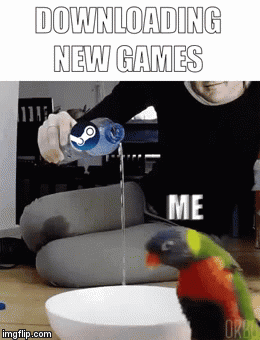

You can even use the images from your gallery to make memes and can join two different memes in the app to create a new and unique meme. These categories are further divided into sub-categories that can be used to find appropriate memes for every situation. It offers you different categories, including celebrities, cartoons, animals, rage, advice, and a lot more. Meme creator can be dubbed as one of the most sorted meme-generating apps available on Google Play. The app also has your back in terms of privacy, as it never posts your memes without your permission. The best part about the Meme Generator is that it offers you watermark-free memes. You can also create dank memes and share them on the platform too. You can insert multiple captions and make modern and classic memes with more than 60 different font styles. Not only this, but the app also provides you with more than 100s of stickers to use in your memes, and you can even customize the stickers. Meme Generator offers a lot of funny effects and also provides community updates weekly.

You can use any picture from your device, too, if you want to create a personalized meme. The app offers more than 1000 meme templates that can be used to create funny memes for posting on social media and sharing personally. With more than 10 million downloads on Google Play, Meme Generator has already made its place in the Editor’s choice. To make it easy for you, here we have listed some of the best meme-making apps to add humor to your social life. Finding the best meme creator apps is quite a complicated task as there are several options available on Google Play and the Apple App Store. Most people love scrolling memes on social media, and few of us give a shot and create memes too for posting and send it personally.Ĭreating a meme is no rocket science you just need a good meme creator app with different templates. It's hard to say, though.In today’s world, when individuals spend a lot of time on social media platforms, memes have made their special place in everyone’s lives. Probably all of those contribute some amount. Selection bias of the user base (think: socio-economic status, and maybe even average technical know-how or comfort with software) iOS users use their devices way more than Android users, for all purposes (but, is that because of the previous thing? Maybe) it could have something to do with the ecosystems the two app stores have cultivated, causing different levels of trust among the two user bases when it comes time to spend money it could have something to do with the quality of the experience of using the respective operating systems themselves. There are a bunch of factors that probably cause this, but they're all mixed up and intertwined so it's hard to point at one and go "that's it, that's the reason". Common wisdom (backed up by data) in the industry is that, generally speaking, your "conversion rate" for paid or subscription apps on Android will be a tiny sliver of what it is on iOS, unless your app is very unusual. It's part of why Android's ecosystem has so much prominent adware. This is the norm on Android, and means you have to have huge scale before it's worth releasing a paid or subscription app on Android, which might be viable at much smaller scale on iOS.


 0 kommentar(er)
0 kommentar(er)
